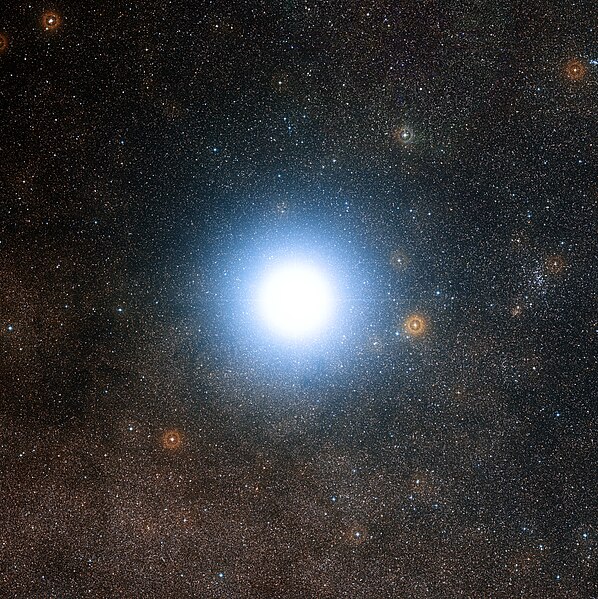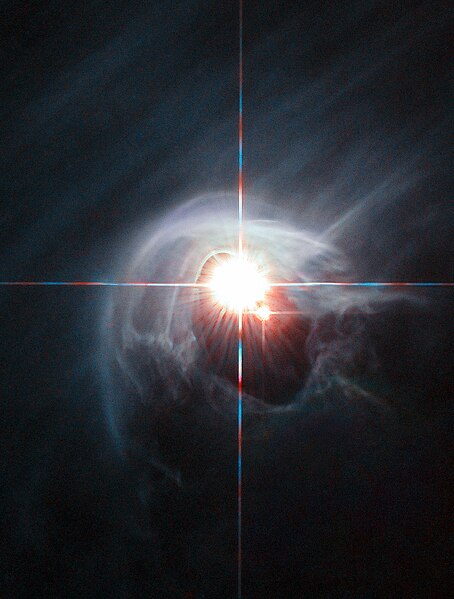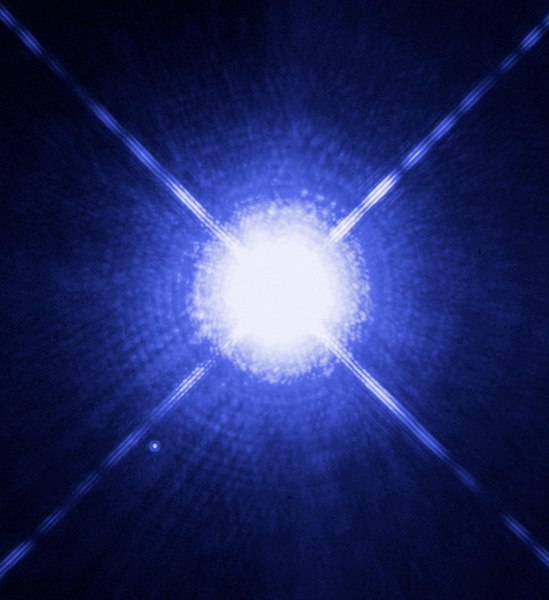Alpha Centauri is a triple star system in the southern constellation of Centaurus. It consists of three stars: Rigil Kentaurus, Toliman (B) and Proxima Centauri (C). Proxima Centauri is the closest star to the Sun at 4.2465 light-years.
Alpha Centauri AB (left) forms a triple star system with Proxima Centauri, circled in red. The bright star system to the right is Beta Centauri.
View of Alpha Centauri from the Digitized Sky Survey-2
Alpha Centauri A (left) is of the same stellar type G2 as the Sun, while Alpha Centauri B (right) is a K1-type star.
Looking towards the sky around Orion from Alpha Centauri with Sirius near Betelgeuse, Procyon in Gemini, and the Sun in Cassiopeia generated by Celestia.
A star system or stellar system is a small number of stars that orbit each other, bound by gravitational attraction. A large group of stars bound by gravitation is generally called a star cluster or galaxy, although, broadly speaking, they are also star systems. Star systems are not to be confused with planetary systems, which include planets and similar bodies.
The Algol three-star system imaged in the near-infrared by the CHARA interferometer with 0.5 mas resolution in 2009. The shape of Algol C is an artifact.[citation needed]
Artist's impression of the orbits of HD 188753, a triple star system.
Star system named DI Cha. While only two stars are apparent, it is actually a quadruple system containing two sets of binary stars.
Sirius A (center), with its white dwarf companion, Sirius B (lower left) taken by the Hubble Space Telescope.








